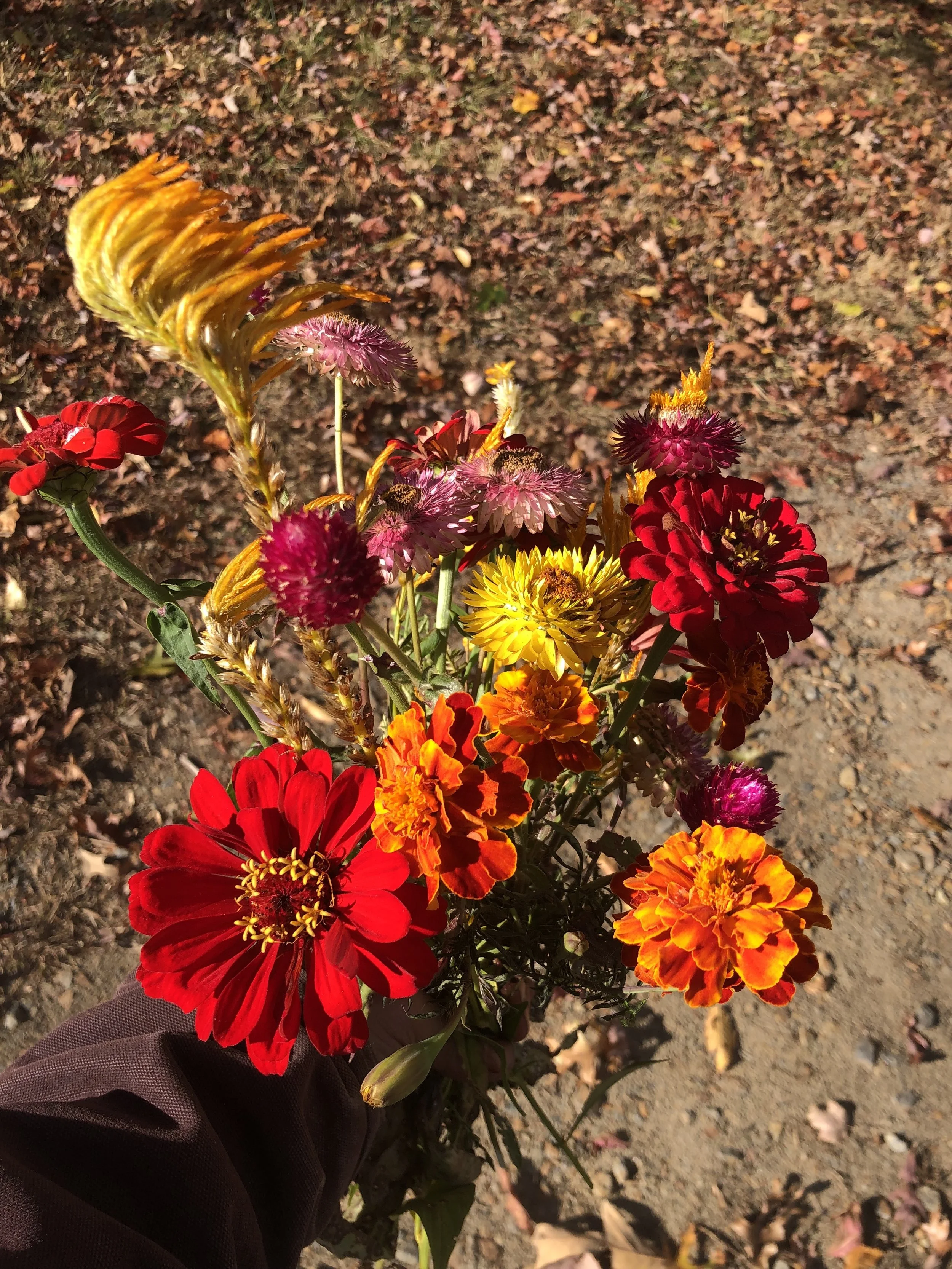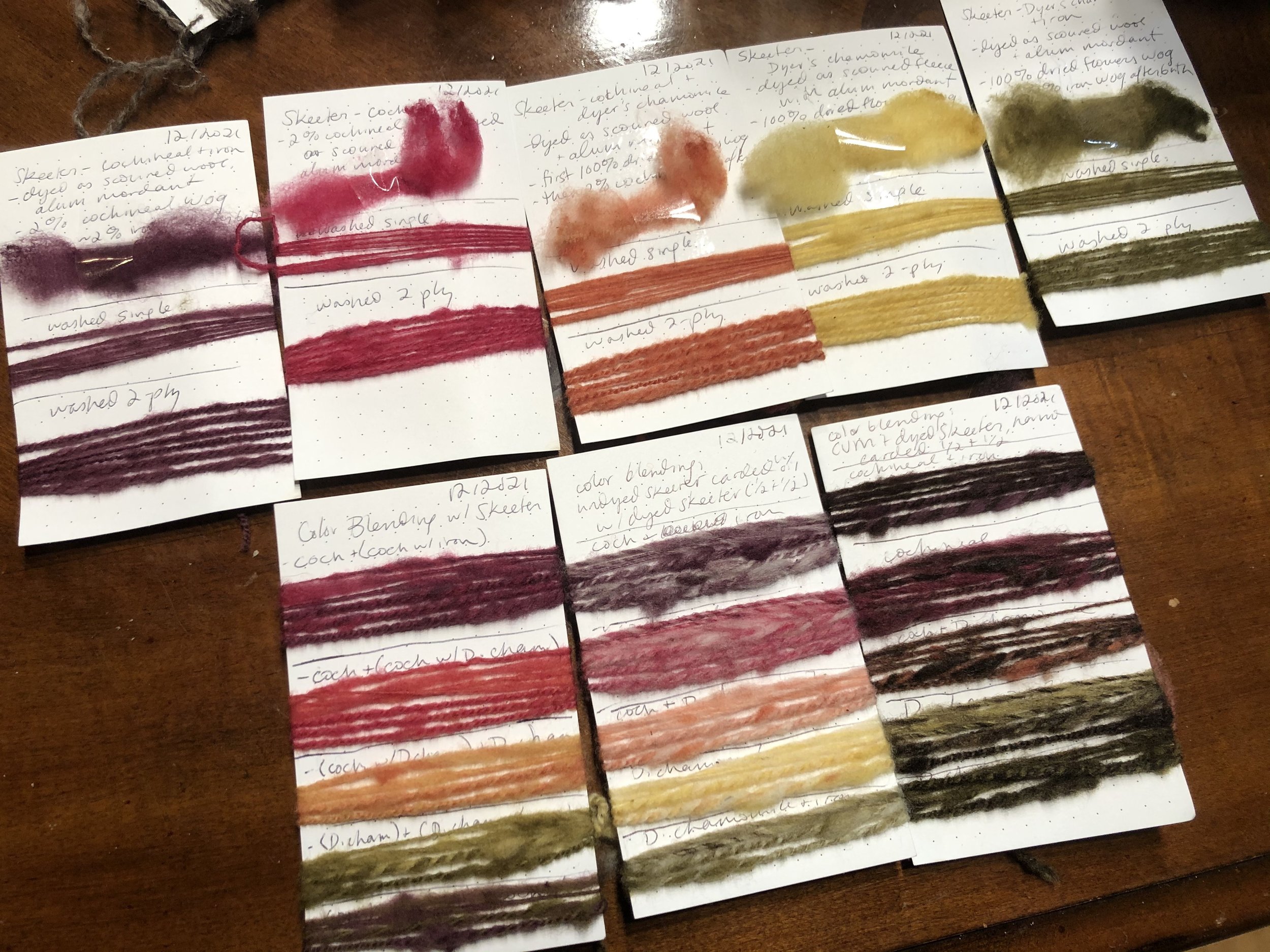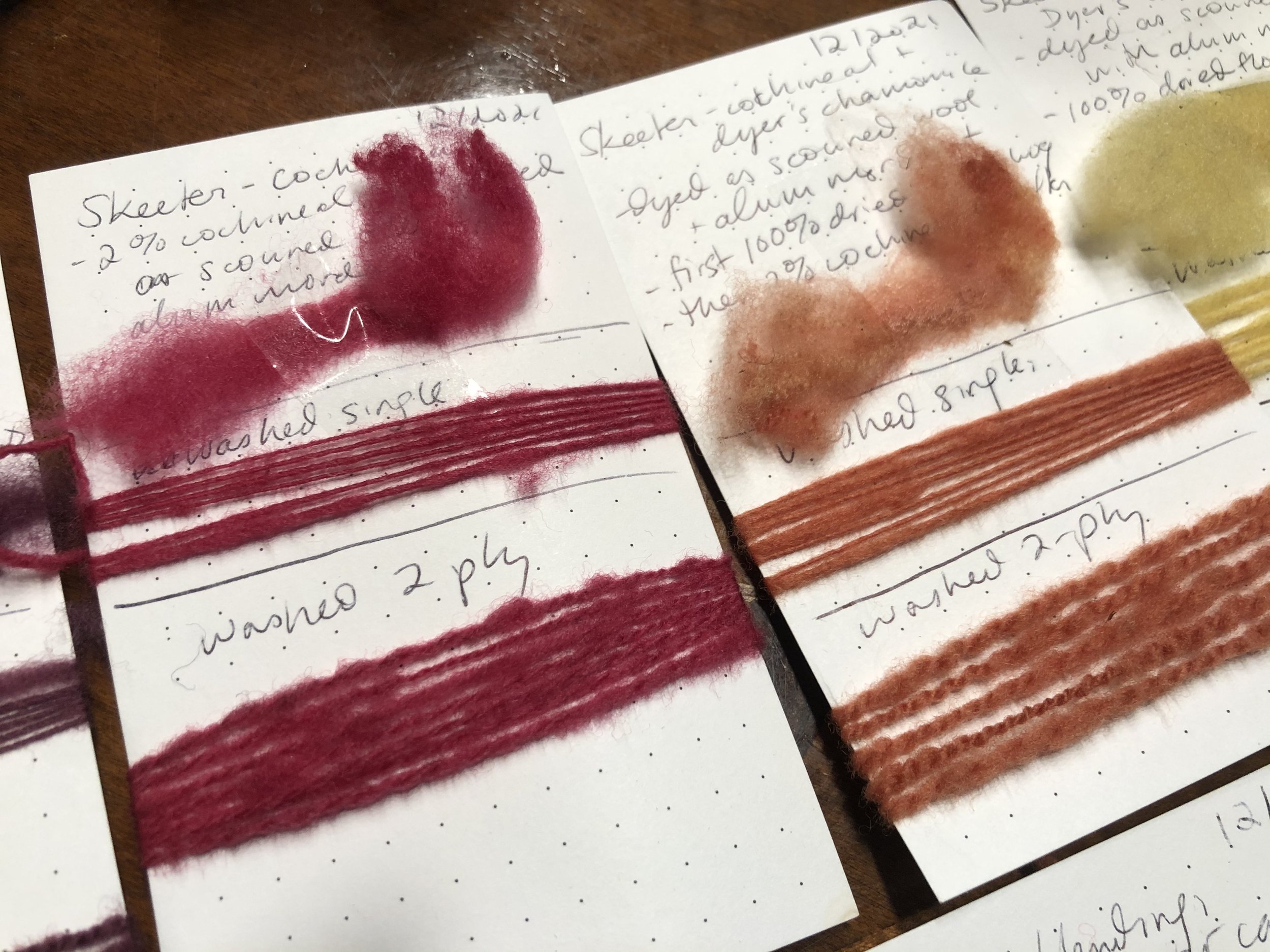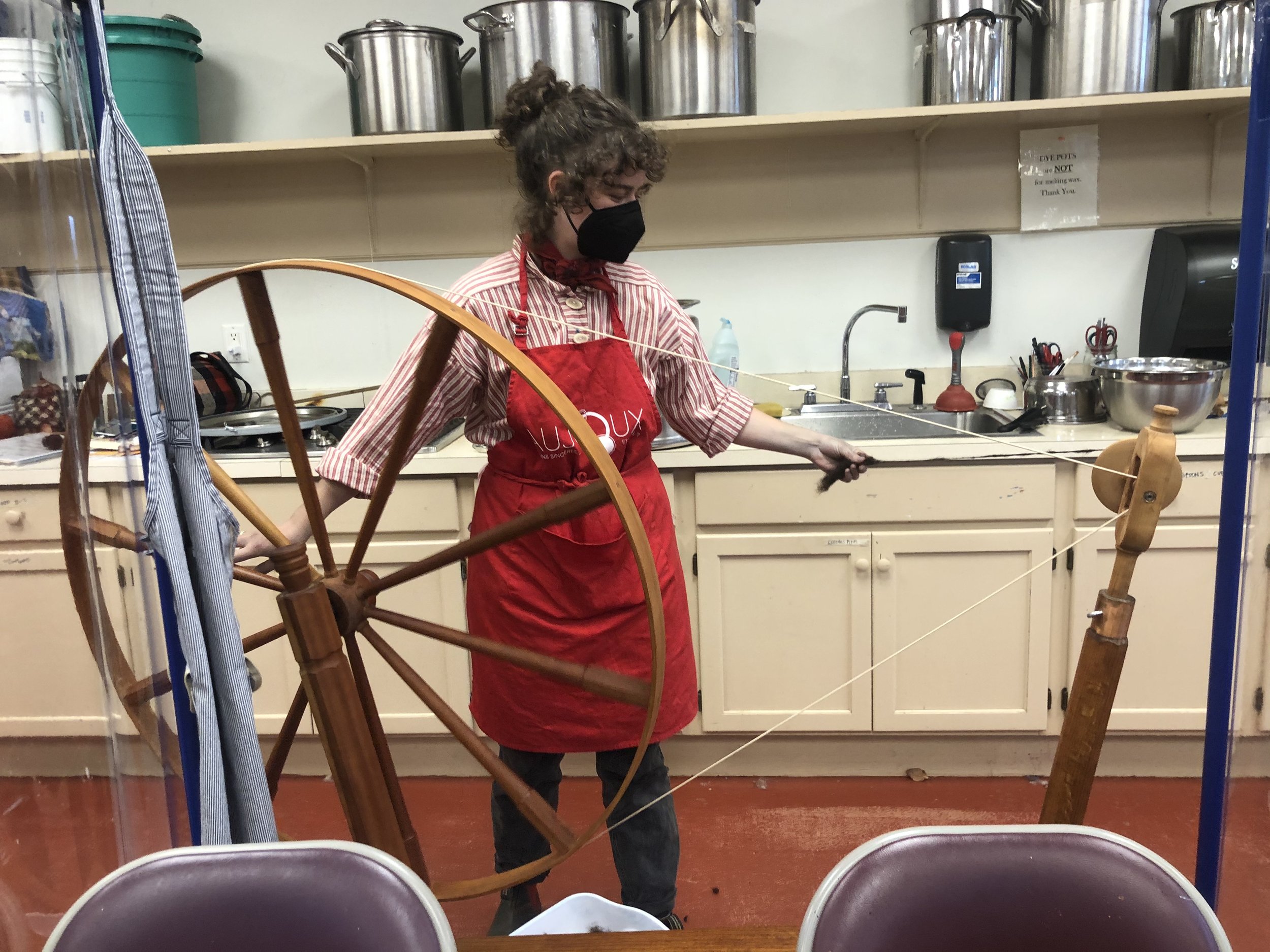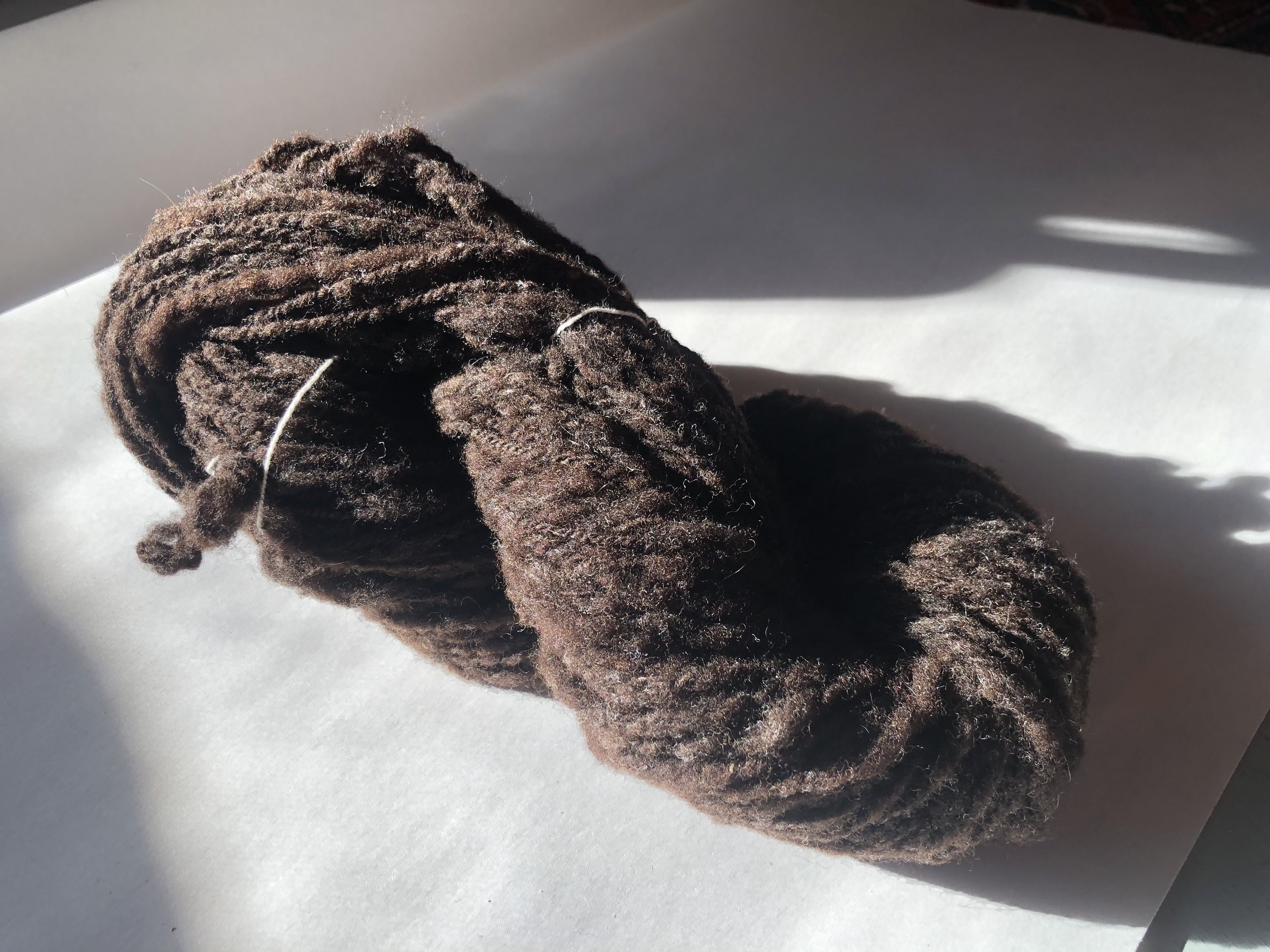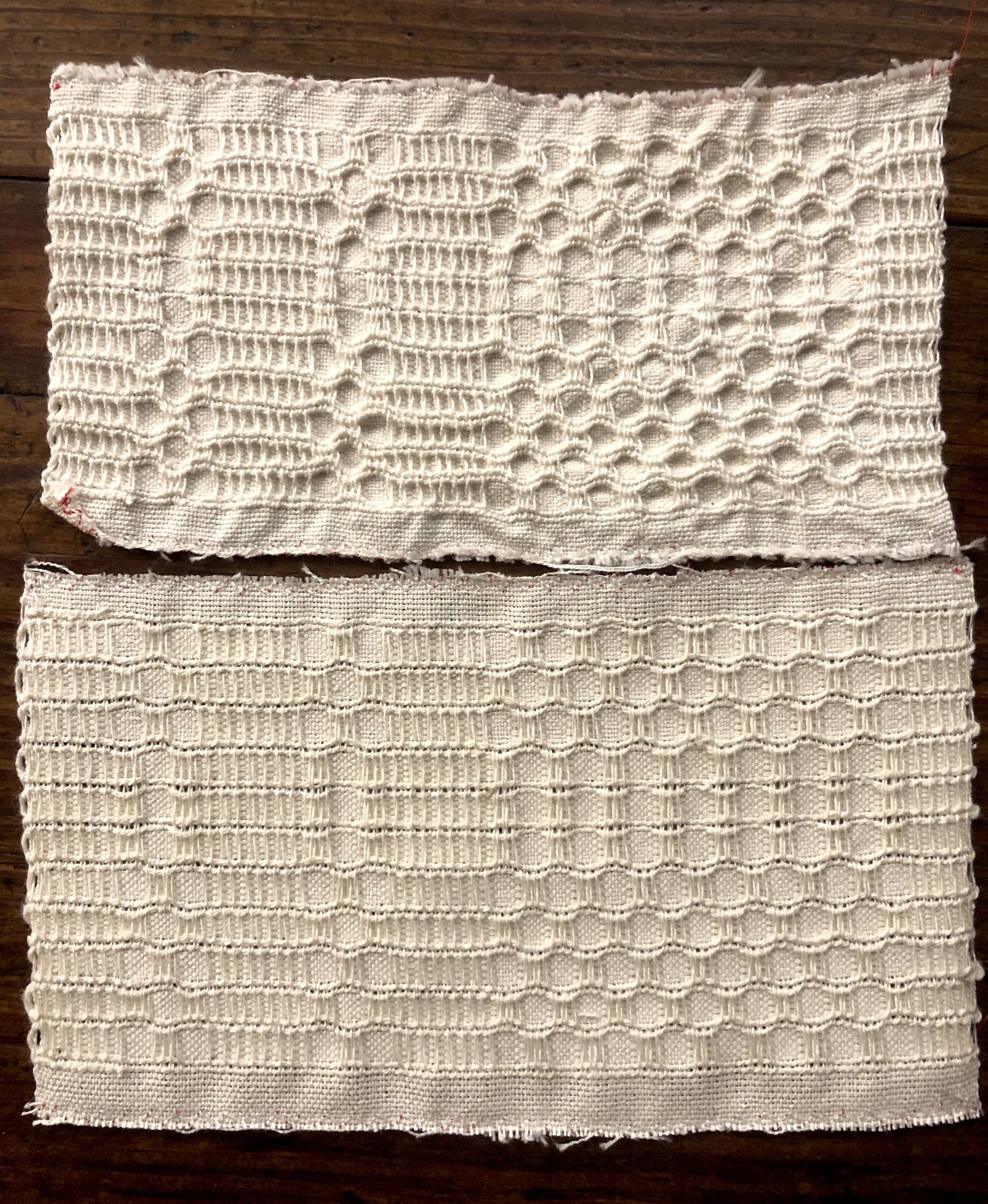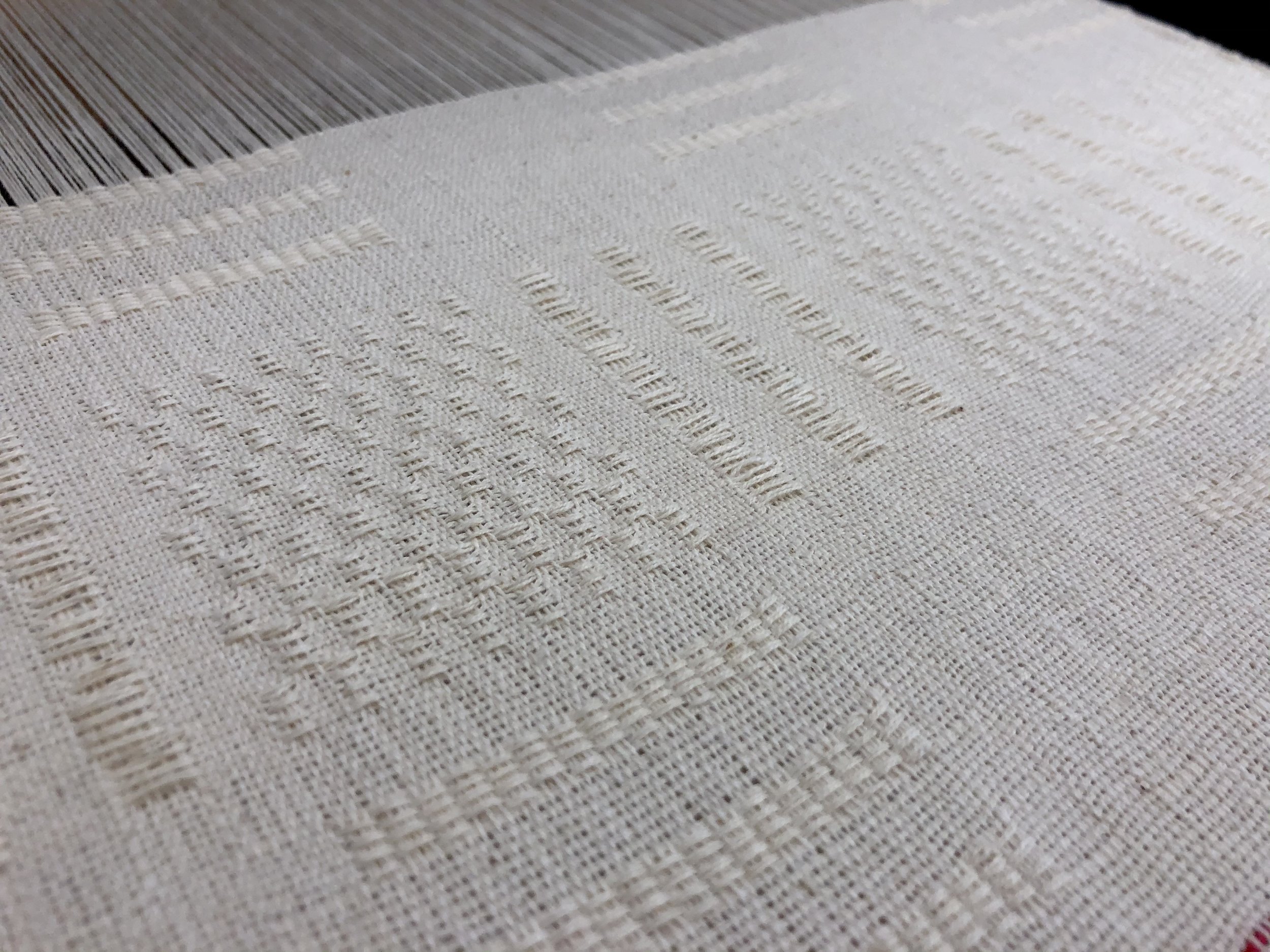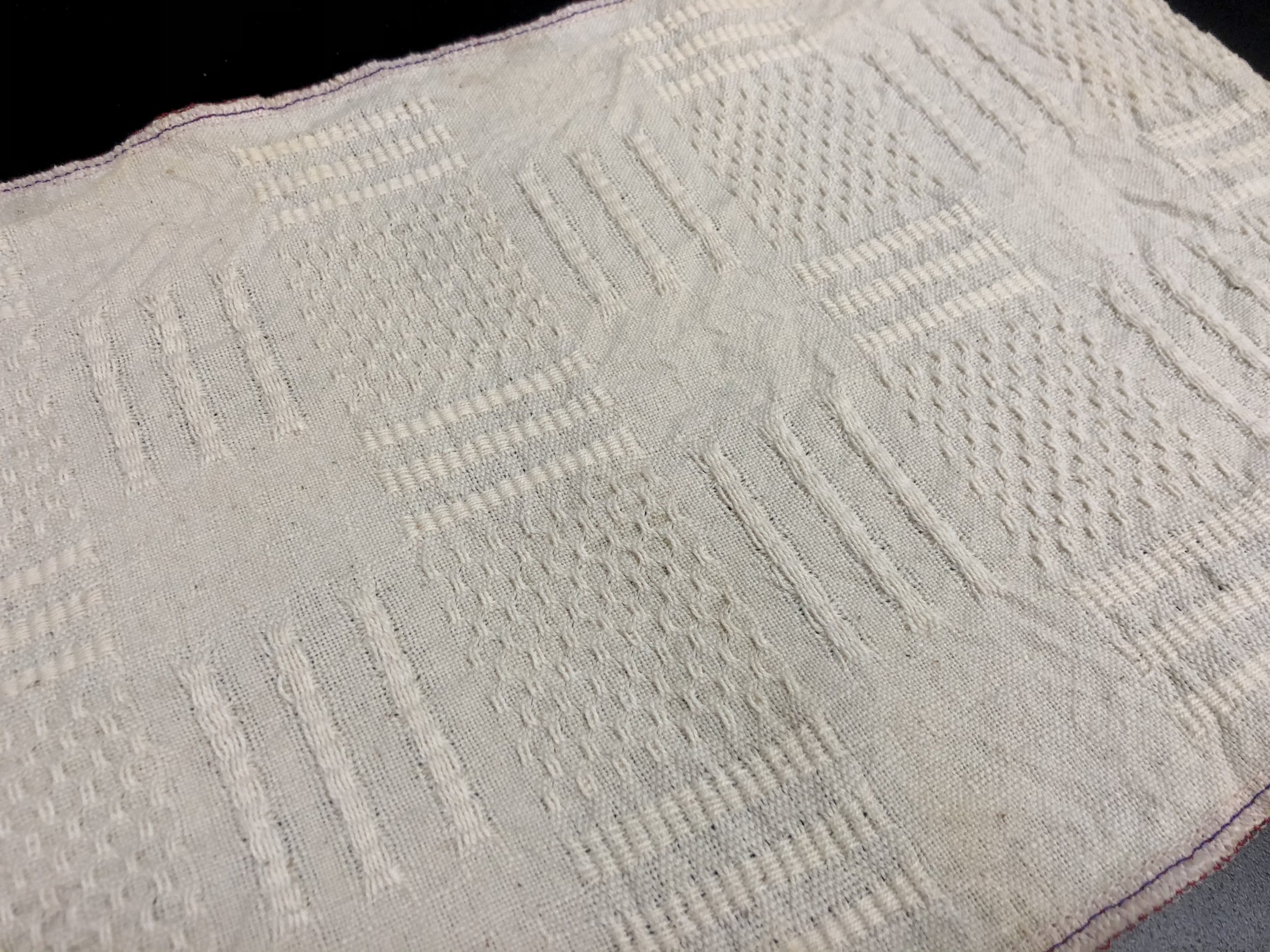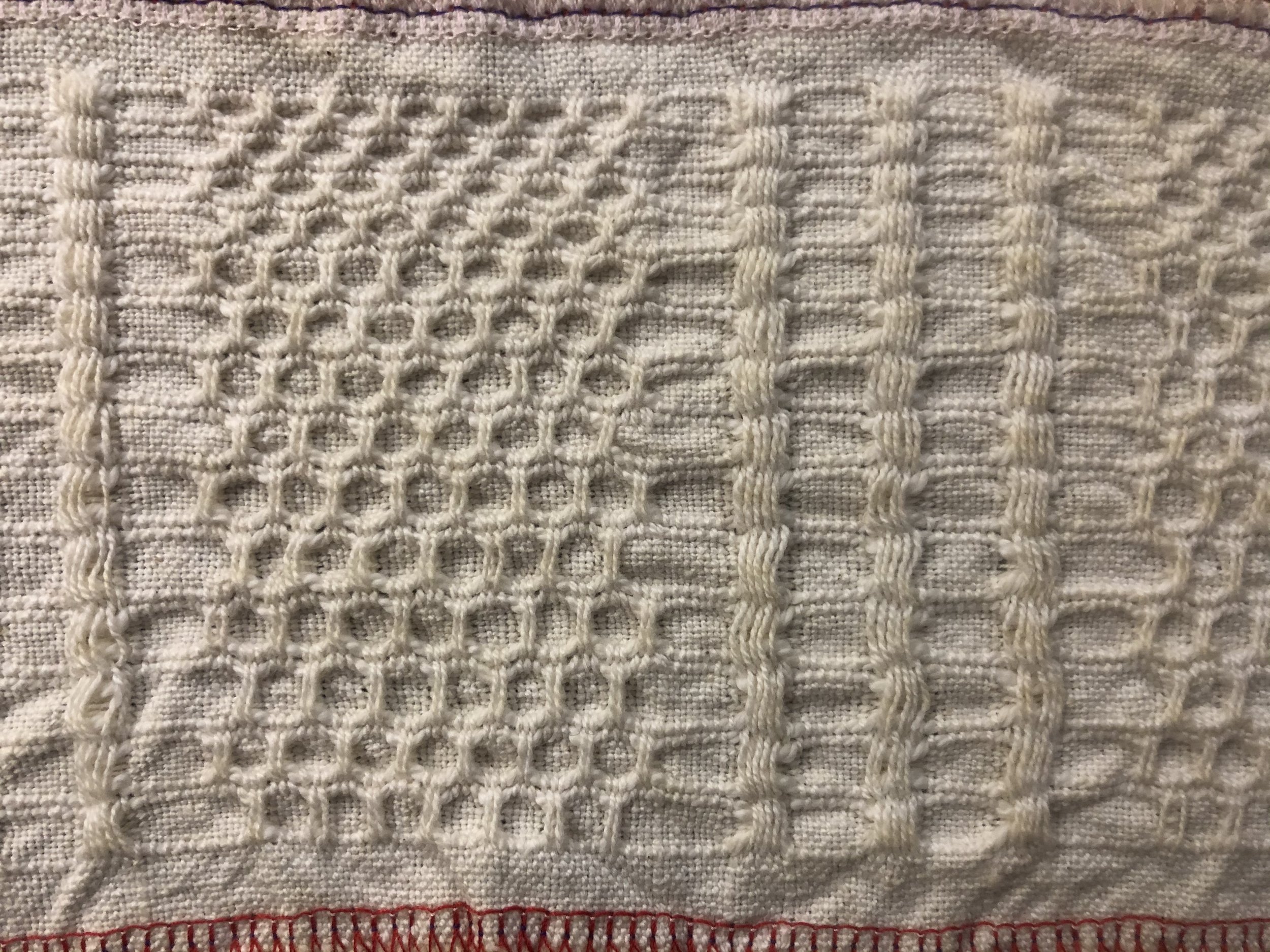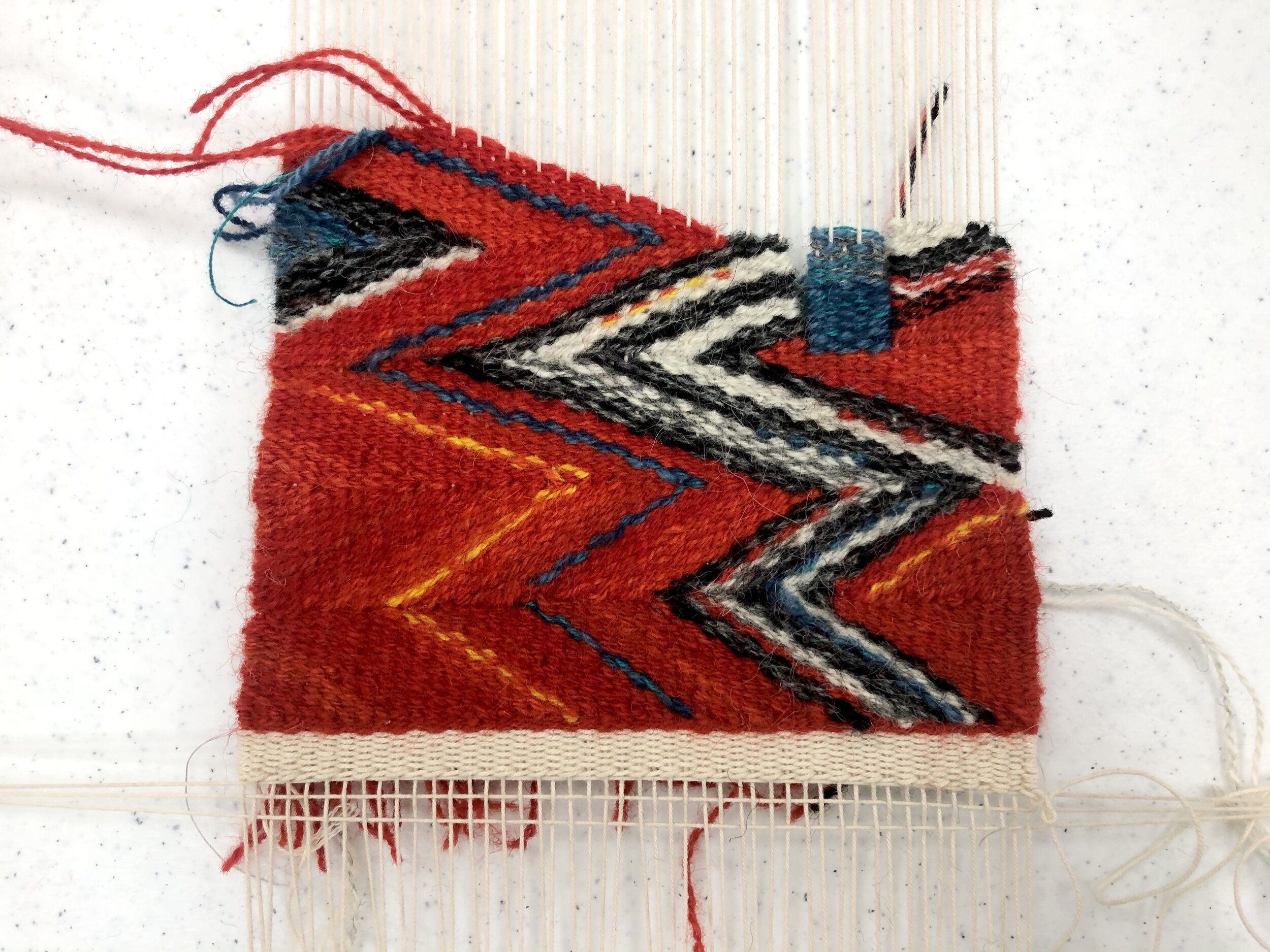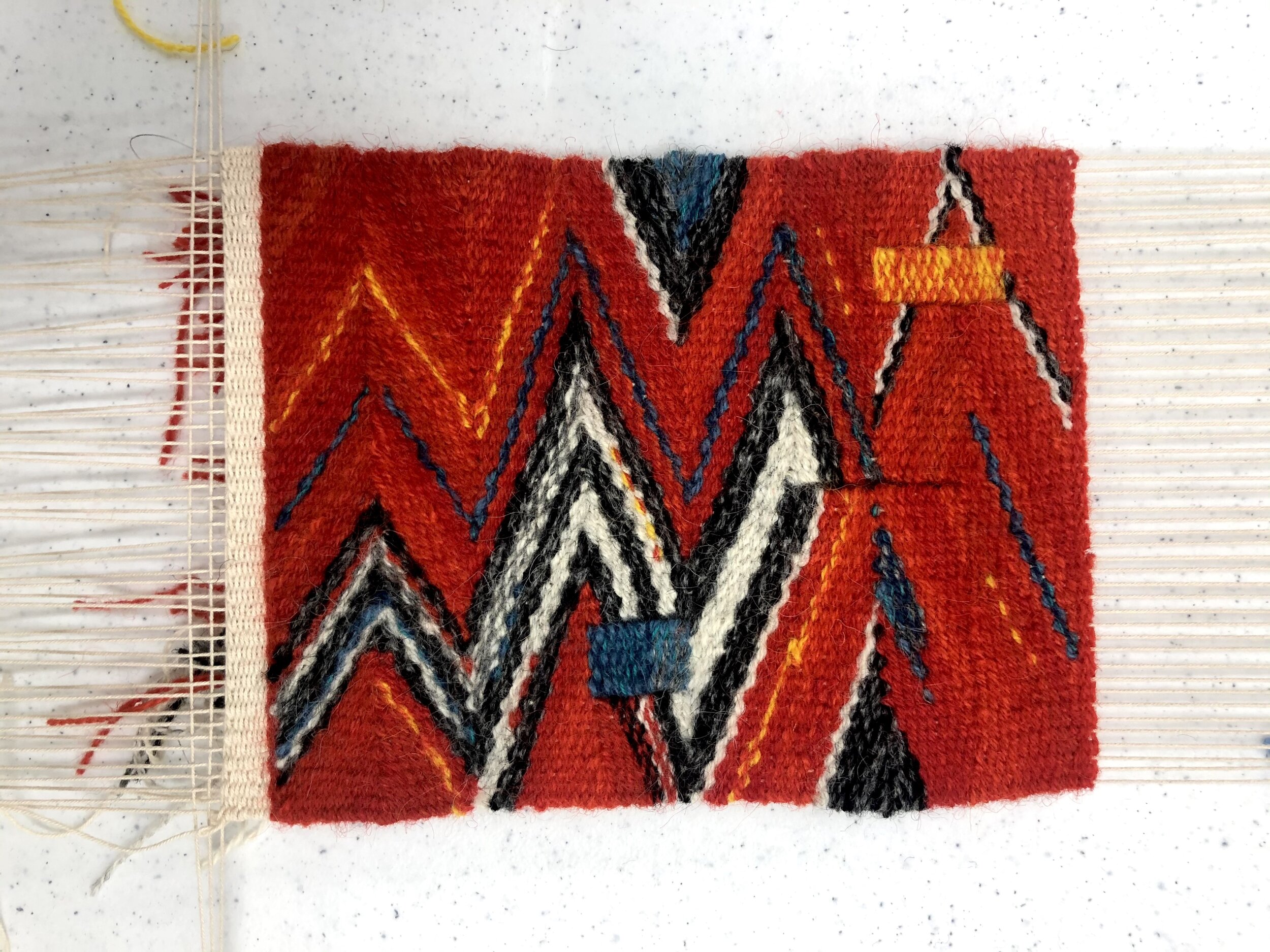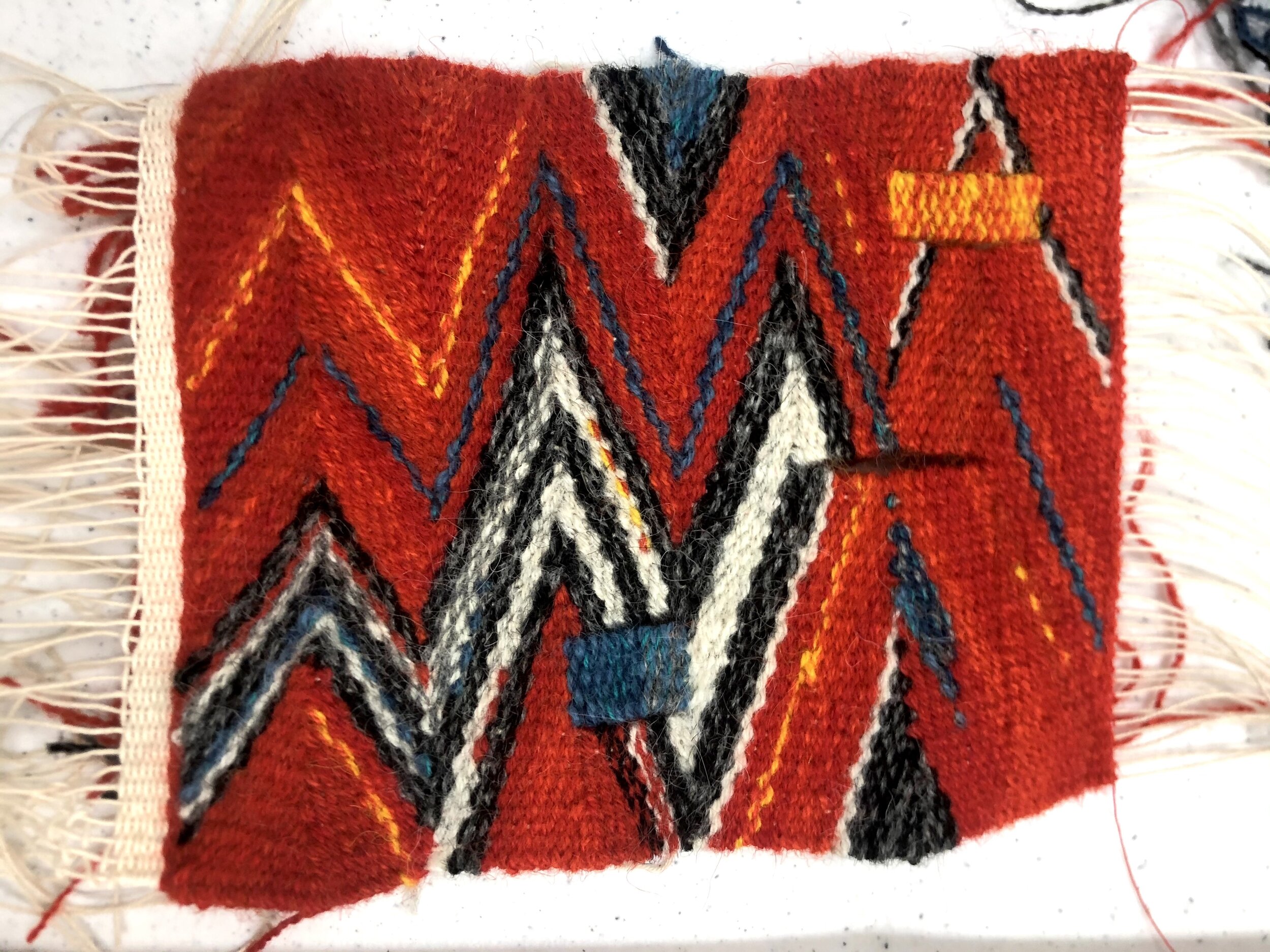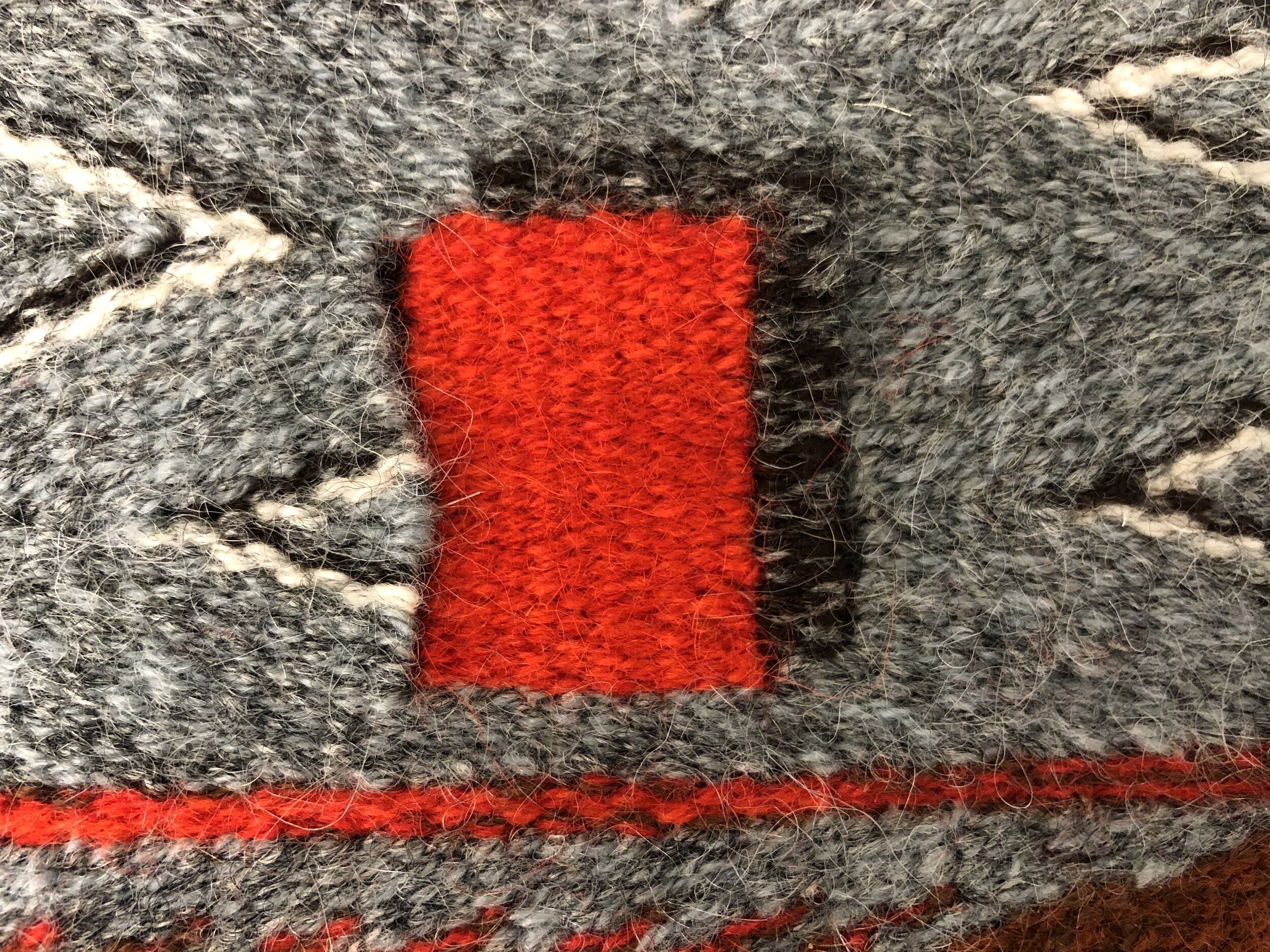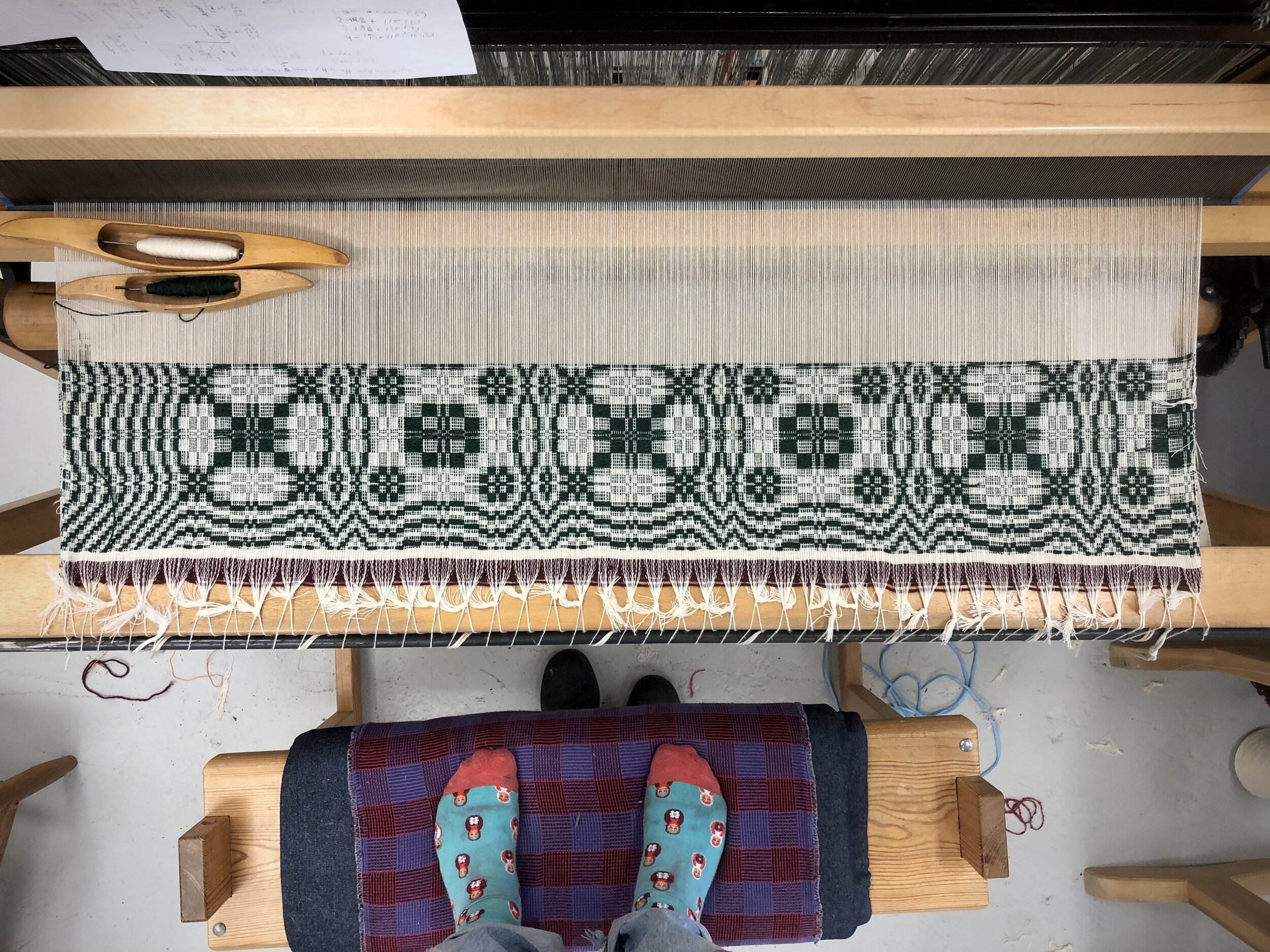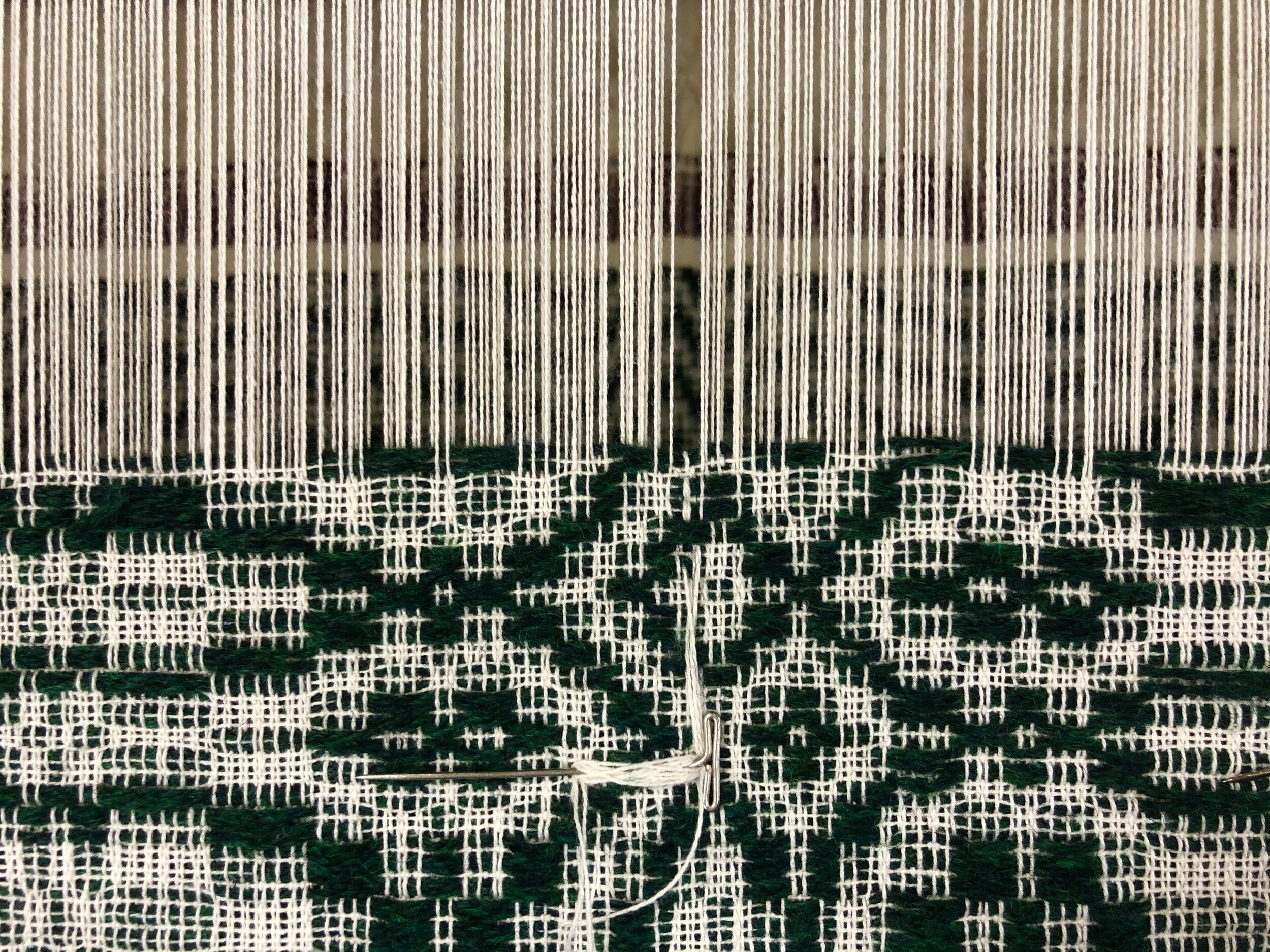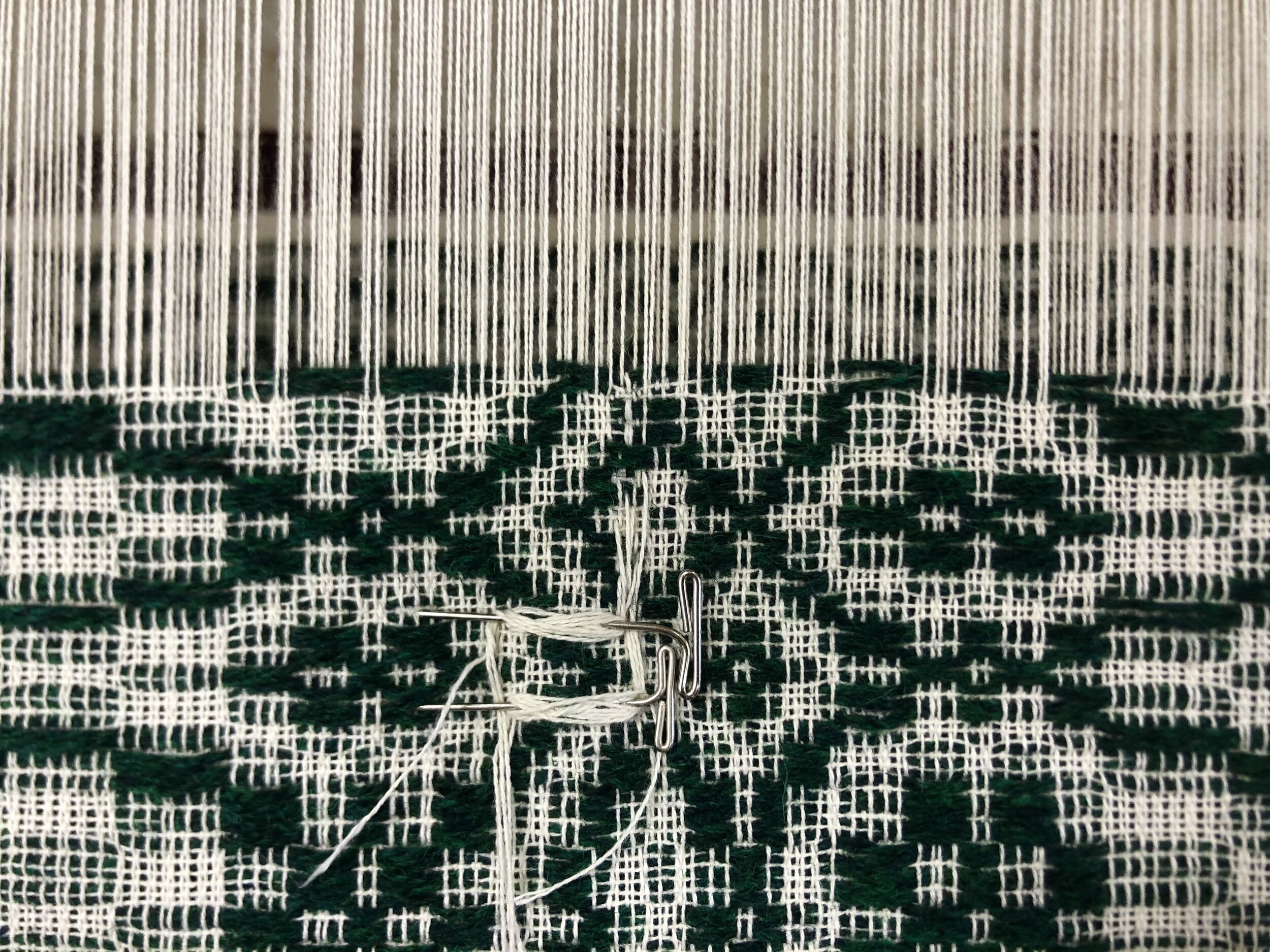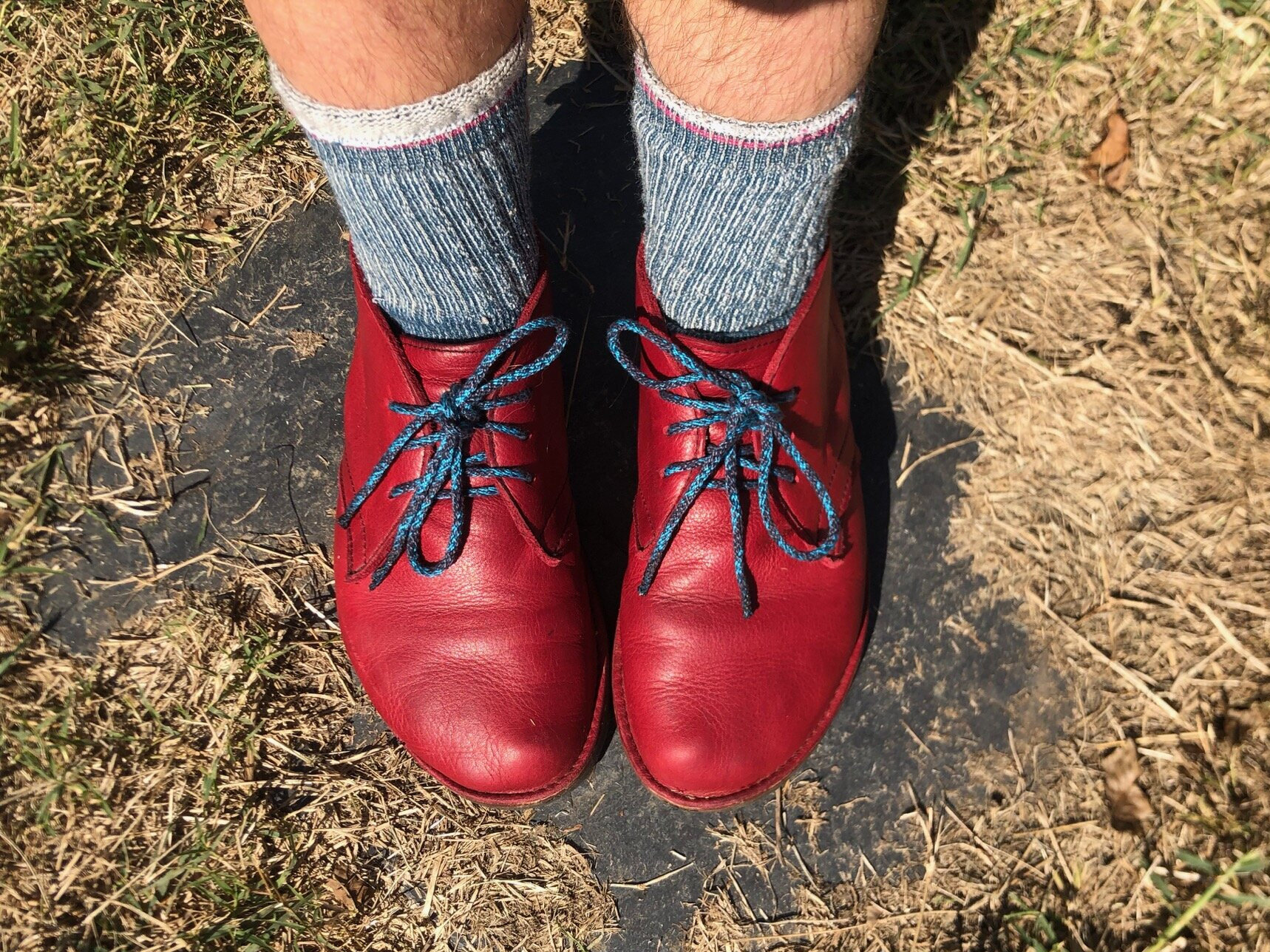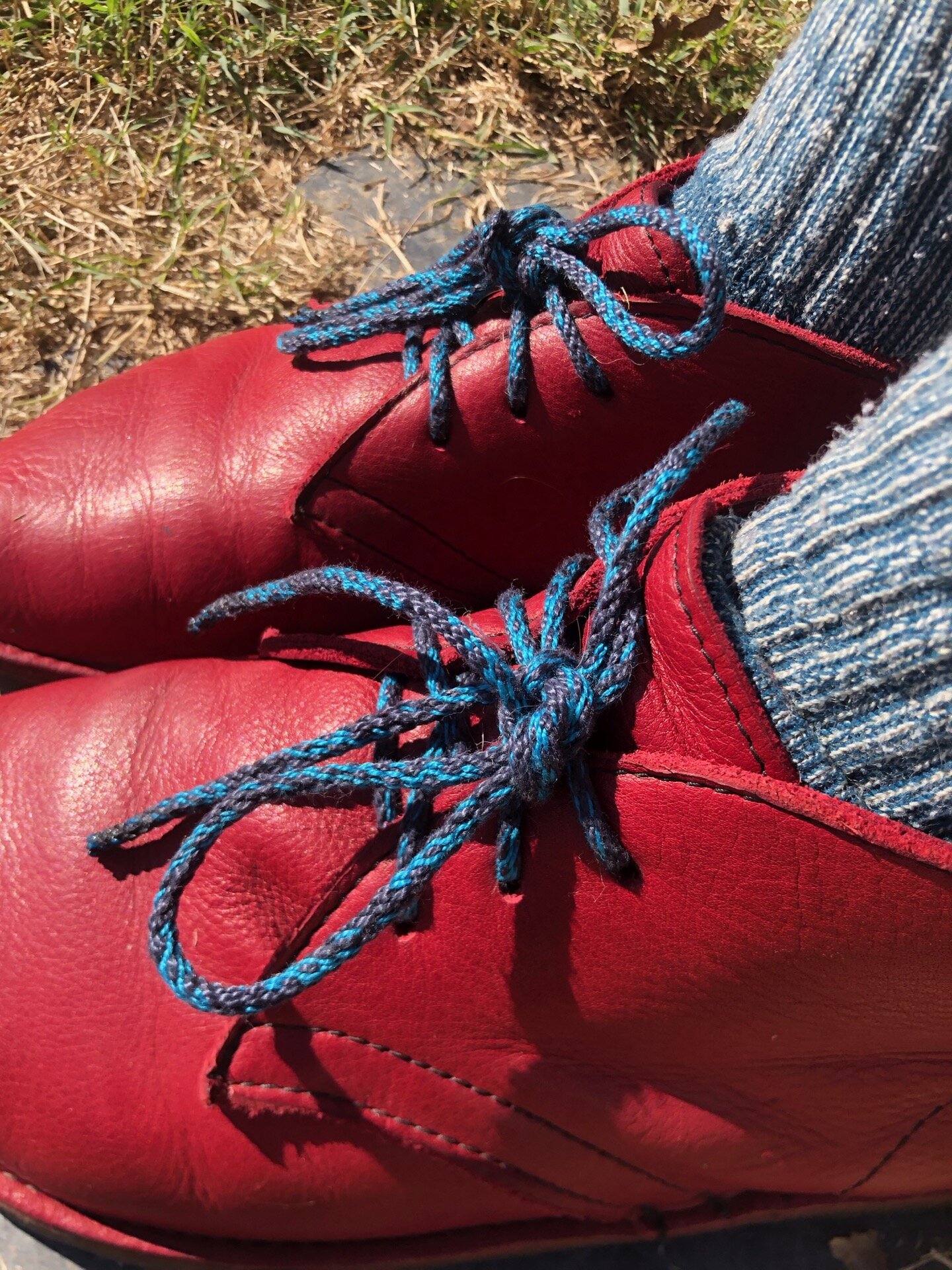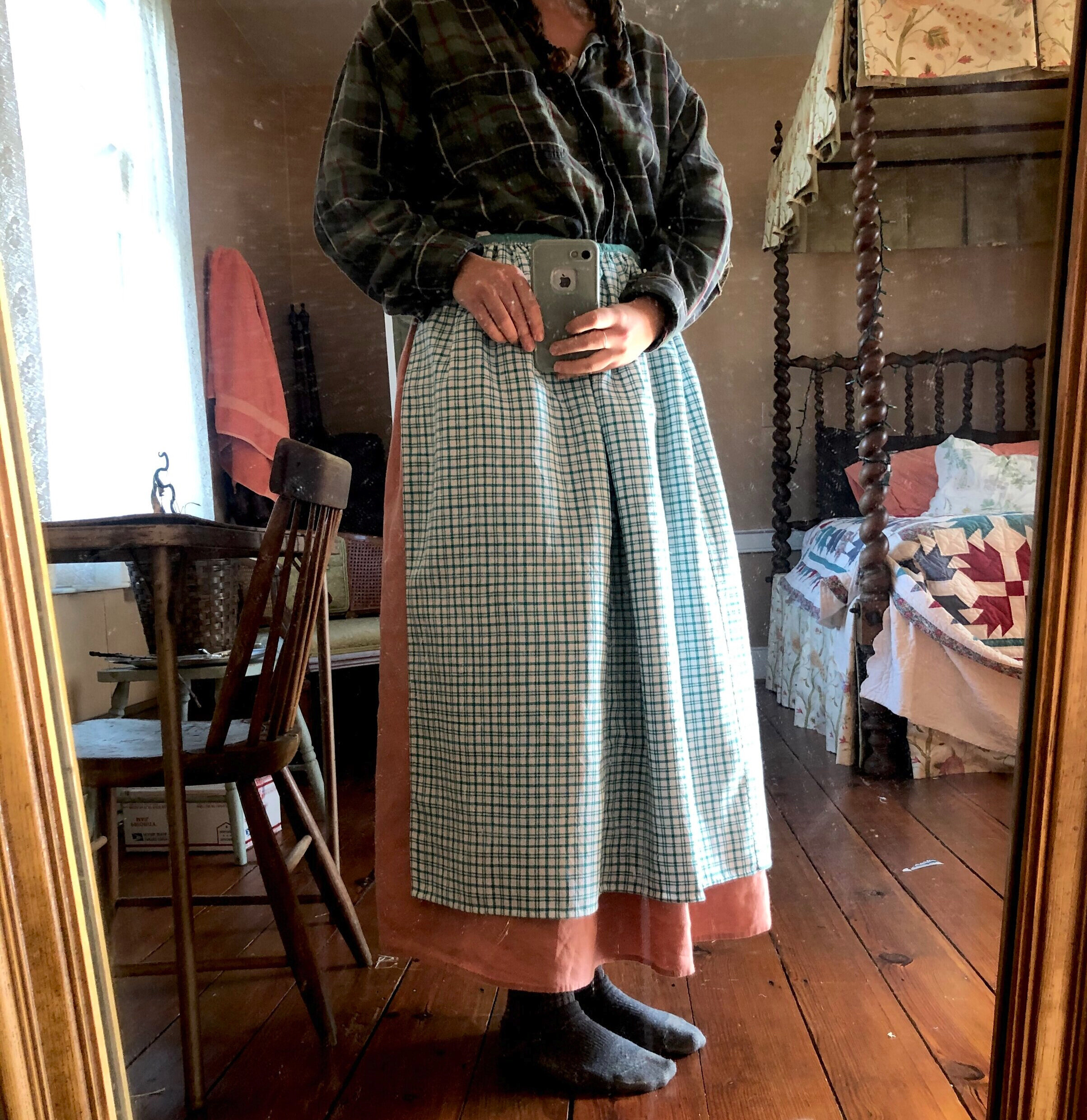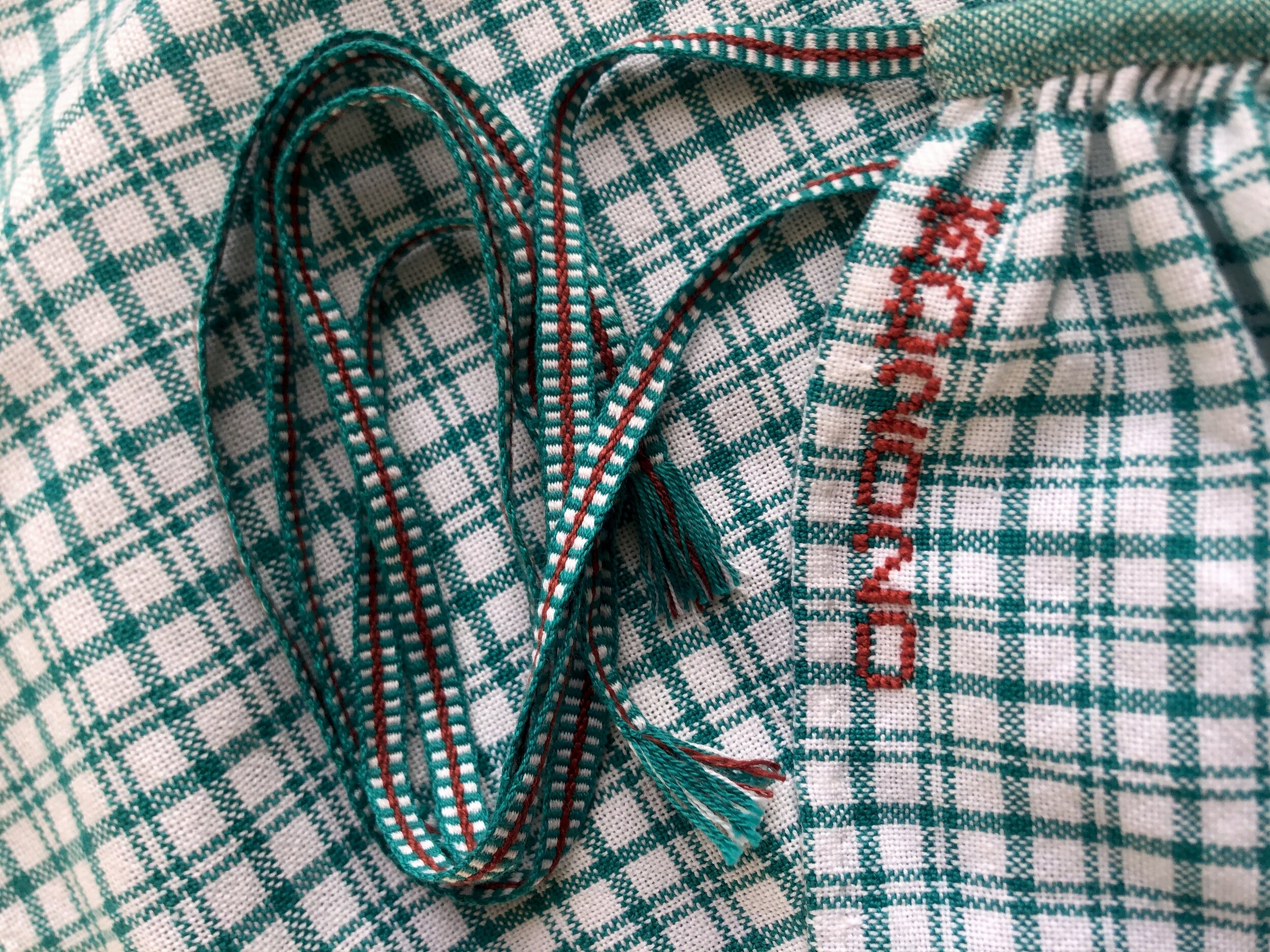I never sat down to write about my time at Marshfield School of Weaving in Vermont this past winter, but my birthday present to myself was a week off of work to warp up my blue counterbalance loom at home, which gave me some time to reflect again on that experience and all that I learned. This class felt like exactly the right next step that I needed, and the skills I picked up were techniques that I had been reaching for but didn’t know where to find on my own.
Justin Squizzero led the class and emphasized this tradition of weaving and the way it is passed down as experiential learning; you learn by watching someone who knows what they’re doing, with a focus on the doing itself rather than explaining how to do.
The process of weaving on an antique four poster loom also showed me how much better the movements of weaving flow when they’re done on a human scale. Using a big warping board, winding bobbins on an antique winder, and being able to step inside the loom left my body feeling rejuvenated rather than crunched.
I wove my wedding blanket with singles wool, which meant that we got to do a waulking with Norman Kennedy on the last day. This was another really special moment where we brought together hands, cloth, and heart as we sang songs while pounding the cloth on the table. Waulking the cloth after a long soapy soak allows the fibers to come together and finish it into a fabric with a really lovely hand.
I had a lot more to say about this right after the class but this blog function is a little cumbersome at the moment so maybe more will trickle out later. But the biggest takeaways for me from the whole experience were that people really had it figured out a couple hundred years ago, and now that I’m an experienced weaver who understands the process, it’s really worth it for me (and you! if you’re reading this) to take the time to delve deep into the ways folks used to weave. They knew what they were doing, and it has really helped me to understand better the cloth and the loom to spend the effort to get to know these machines.
All that said, setting up my little blue loom this past week was truly enlightening this go-round. Turns out I used to have no idea what I was doing! But after learning more about loom mechanics at Marshfield this little guy is weaving like a dream.
Happy fall!








